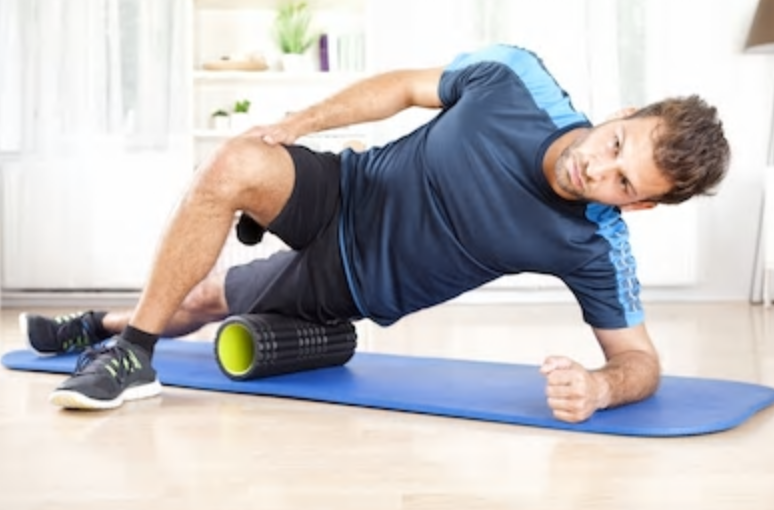They are visible in nearly every gym, fitness studio, and athletic field in the greater Portland area. Foam rollers, release, balls, and massage sticks are equipment used to relieve tight muscles as well as improve mobility and overall well-being. But, what is it exactly? Do they work? When should you use them? Let’s take a closer look at how you can use these items to your advantage.
All this equipment falls under the umbrella of “self-myofascial release” or SMR. They are typically rolls, stick or balls of various textures made of plastic or foam. They work by compressing and pushing/pulling your muscles, tendons, ligaments and other soft tissue structures, including blood vessels and nerves. It is often credited with increasing blood flow and breaking up restrictions in your muscles.
In the literature, effects such as increased ROM1-2, 4, flexibility1-2,4, and improved function of the circulatory system5 have been reported. While a clear mechanism has not been fully identified most reports credit an increase in tissue temperature, increased blood flow and decrease tissue viscosity for ROM improvements. This was achieved with rolling the target tissue with either a foam roller or tennis ball for 3-4 minutes1-2, 4. The largest increases in mobility were achieved when SMR techniques were combined with static stretching. While these results can help people feel more mobile and loose, they are not linked with increased performance1 as compared to more dynamic techniques (see post regrading dynamic warm-up) and are best avoided prior to competition. At Alliance Physical Therapy we take advantage of these techniques, enabling you to improve between visits which helps us achieve our mission of “getting you better, quicker”.
Another important role of SMR techniques is for recovery. There has been a dramatic improvement reported in post-workout soreness with the addition of SMR to your cool down routine3, 6. Here the protocol was different. Subjects were instructed to perform 1 minute sets on each body part and repeat 2 times. This was performed immediately after exercise and resulted in a 25-50% reduction in soreness3. Dynamic movements such as sprint speed, jump height, and muscular endurance recovered more quickly with SMR techniques as well6. These exciting results suggest that with an inexpensive and convenient tool such as a foam roller we can speed up recovery times before the next workout or just simply be more comfortable between sessions.
Foam rolling or other SMR techniques are a convenient, inexpensive, and effective means to improve mobility, movement patterns and recovery. By educating and empowering our patients at Alliance PT we help you stay independent of healthcare professionals so you get better and stay better. So get out to the gym or just get outside, if you need help along the way, look us up!
Joshua Gelfand, DPT, Cert. DN
1. Arabaci, R. Acute effects of pre-event lower limb massage on explosive and high speed motor capacities and flexibility. Journal of Sports Science and Medicine. 2008 (7); 549-555
2. Grieve, R et al. The immediate effect of bilateral self-myofascial release on the plantar surface of the feet on Hamstring and Lumbar Spine flexibility: A pilot Randomized controlled Trial. Journal of Bodywork and Movement Therapies. 2015. 19 (3); 544-552
3. MacDonald GZ, et al. Foam Rolling as a Recovery Tool after an Intense Bout of Physical Activity. Medicine and Science in Sports and Exercise. 2013. 46(1); 131-142
4. Mohr AR, et al. Effect of Foam Rolling and Static Stretching on Passive Hip-Flexion Range of Motion. Journal of Sport Rehabilitation. 2014.(23); 296-299
5. Okamoto T, et al. Acute Effects of Self-Myofascial Release Using a foam Roller on Arterial Function. Journal of Strength and Conditioning Research. 2014. 28(1); 69-73
6. Pearcey GE, et al. Foam Rolling for Delayed-Onset Muscle Soreness and Recovery of Dynamic Performance Measures. Journal of Athletic Training. 2015.50(1); 5-13

Recent Comments